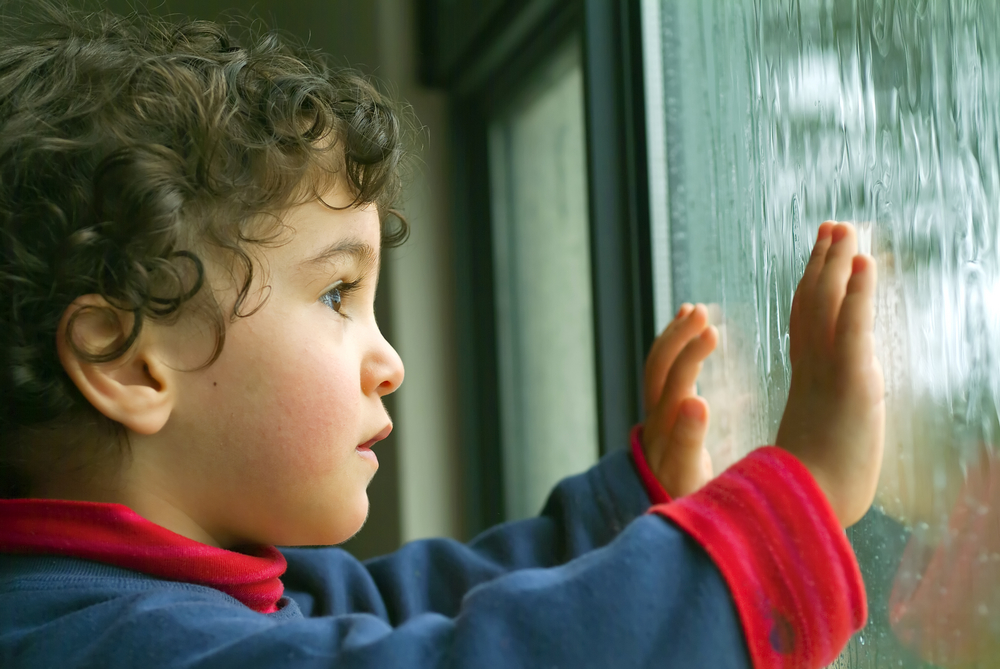
No matter where a family lives, some days are just incompatible with outdoor play and adventures. Maybe it’s too hot, too cold or just too rainy. Indoor days might inspire children to reach for a device and play video games or watch television shows or follow the adventures of YouTubers.
Screen time is part of the daily routine for many children, and as many schools embrace 1:1 computing, screens might be inevitable. Yet, there are other options for rainy day or indoor day recreation and entertainment. These rainy day reading projects can inspire creativity and keep children engaged in literacy:
- Write a fairy tale
- Start a memoir
- Design a wordless book
- Put on a play
- Draw a photo, tell a story
- Listen to an audiobook together
- Play reading games
- Wrap a book
Write a Fairy Tale
Many children know the classic fairy tales. These stories, though, started from a writer’s imagination. On a day that’s too dreary or too cold or hot to venture outdoors, encourage children to create their own fairytale adventures.
Brainstorm characters first. What are the names of the main characters? What do they look like? How do they dress? Encourage children to think about the details of their characters including their traits, appearance and their personality.
Then encourage children to brainstorm the location of their story. They can name the country or place whatever they wish. They should think about what this location looks like. Where do the characters live? Are they living in a house, a castle or maybe in the stars? Children can create any background that they want for their story’s location, but encourage them to describe it.
Next, children need to think about the plot of their fairy tale. What are the characters going to do? Is there an antagonist who will serve as the foil for the story? Children will need to think up a beginning, middle and ending. If younger children need help writing down all the details, parents can lend a hand.
All fairy tales need illustrations. As children write their story, encourage them to illustrate it, too. Parents can use a blank sheet of paper or a colorful piece of construction paper for the front and back covers. Children can write the title and their name on the front cover and illustrate it, too.
To bind the fairy tale, parents can punch holes in the left side of pages and use colorful ribbon to hold it together. Parents also could simply staple the pages together.
Start a Memoir
Every life has a story. Encourage children to start their own memoir. This can be created in a diary or journal format. Older children might begin their memoir by writing down memories from their younger years to their current age.
Memoirs may include different stories that narrate holidays, birthdays or just significant moments of life. Children could include a story about the day a sibling was born, the day they met their best friend, when they lost their first tooth, etc.
Again, younger children could require some help writing down stories. This might be a better project for older children.
Design a Wordless Book
A wordless book is a book without words. Pictures narrate the story. The fun of wordless books is that the plot and the story can change each time. Characters can even have different names.
Children can create pictures for their own wordless book. To tackle this project, parents will need markers, crayons, or colored pencils and lots of blank paper.
Children can use construction paper, but it might not show all the colors of the illustrations. Parents can buy inexpensive white printer paper or even ruled paper for children to design their wordless books.
When creating a wordless book, children might have a plot in mind. However, it could be even more entertaining to just draw pictures of a character doing different things or in different scenes. Then it’s up to the storyteller to put the pictures into a cohesive story.

Put on a Play
Some children love performing arts. Writing a play is another way children can work on reading and writing.
To create a play, children will need to brainstorm characters and a plot. Each character will need to have lines in the play.
The plot of a play can be anything a child imagines. A play can focus on a fairy tale, a funny story or even everyday life. Plays can even focus on myths or historical characters.
When children finish writing their play, encourage them to perform it. Of course, the family will need to help. Children also could make puppets out of Popsicle sticks and construction paper to perform their play.
Draw a Photo, Tell a Story
Like a wordless book, a single drawing can be a doorway into a story. While this doesn’t focus on reading in a standard way, telling stories from a picture can help children think about the formulation of stories and how they are arranged.
Draw pictures with children and take turns telling the story about what’s happening in the picture. Parents and children might both learn something new.
Listen to an Audiobook Together
Listening to a story can let children and adults enjoy a story without (or with) the bound book. Parents might find that children are bored and want to watch videos or movies during a dreary day.
Instead, encourage children to listen to an audiobook. If the family has the book, children can follow along as they listen. Audiobooks can be a fun resource, as they can let children enjoy a book and hear it narrated; narrators might have different voices for each character and children might find this engaging.
Audiobooks can help children enjoy books that are written at a higher level and can help children identify emotions of characters, too.
Play Reading Games
Stuck at home on a hot or miserable rainy day? Play reading games with children to help them practice their sight words or other skills.
Parents can make two cards for each sight word on their child’s list; shuffle the cards and arrange them face down. Now take turns flipping two cards and trying to match the sight words. Make sure children read the word when they turn over each card.
Sight Word Go Fish is another game-based approach for sight word mastery. Parents will need to make four cards of each word. Shuffle the deck, and play Go Fish by the standard rules. The player with the most sight word matches is the winner.
For younger children, parents can have children try to find items in the home that start with a certain letter of the alphabet. Create a fun scavenger hunt using the alphabet.

Wrap a Book
One way that parents can keep children entertained and reading during indoor days is by having a box of wrapped books. ‘Wrap a book’ presents books as mystery presents. Parents don’t have to invest a lot of money for books; visit thrift stores to find low-priced children’s books. Parents should make sure they purchase books that are at their child’s level, though.
Wrap each book in bright and fun paper. Add a bow, too. On indoor days, bring out the box of wrapped books and have children choose one. Then sit down and encourage children to read their new book. Start a family tradition to encourage children to embrace reading on indoor days.
Parents can brainstorm their own fun reading activities and literacy projects to encourage children to open a book or write a story on an indoor day. Create fun traditions to transform these days into immersive reading adventures.

 Español
Español